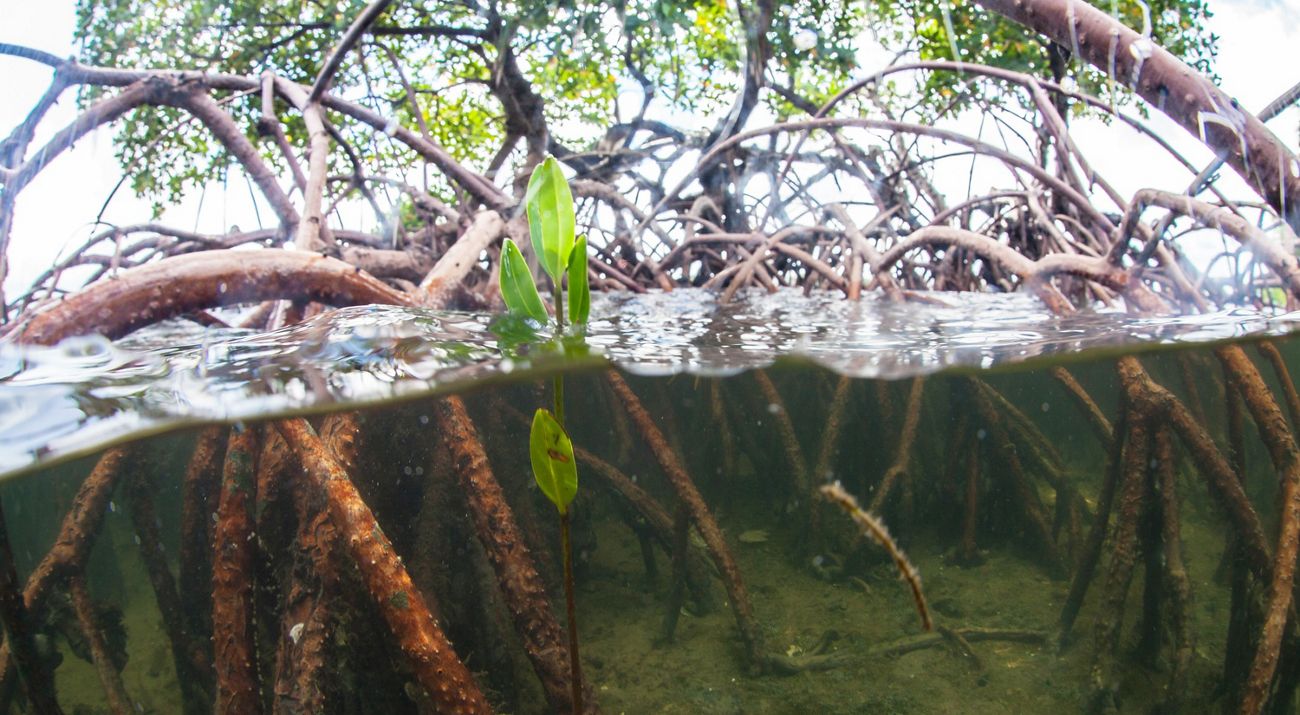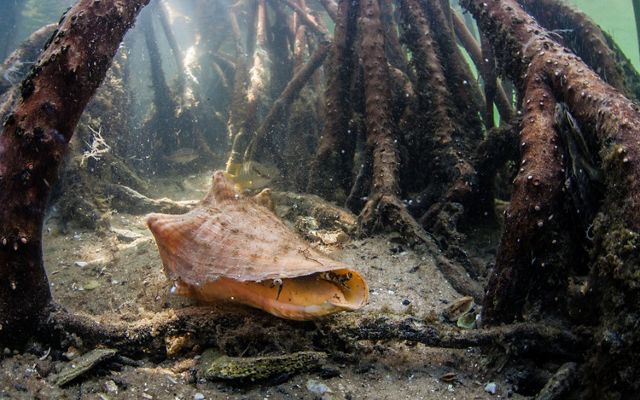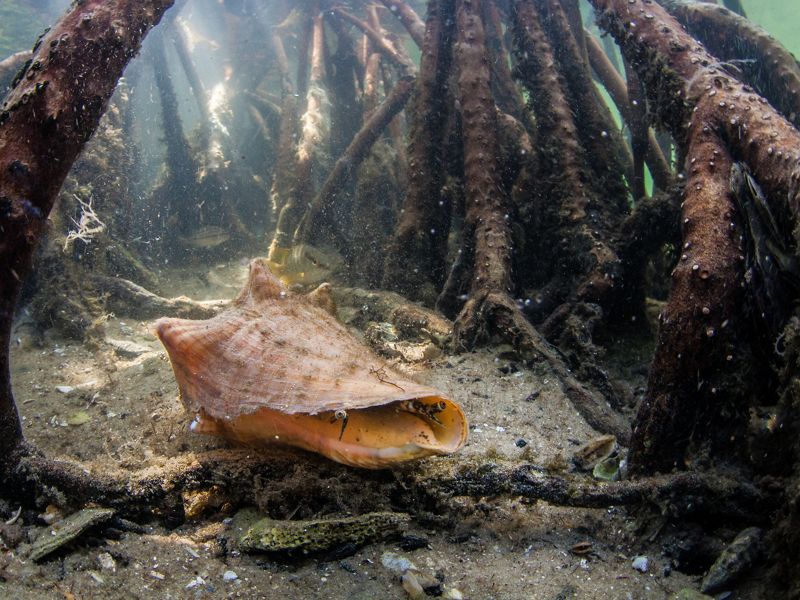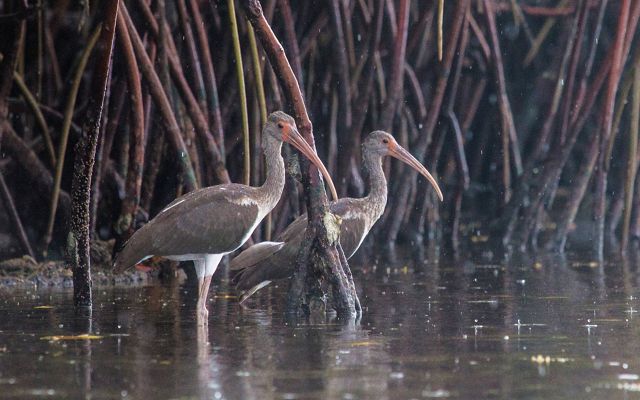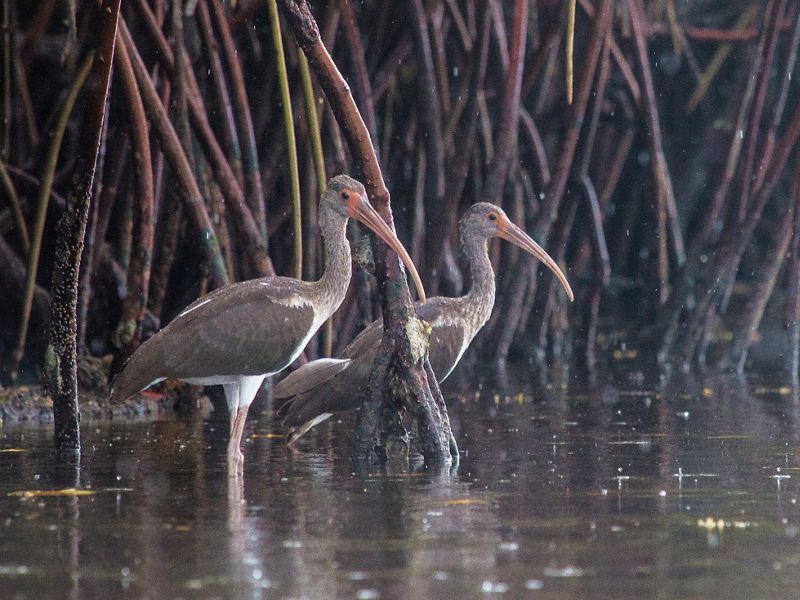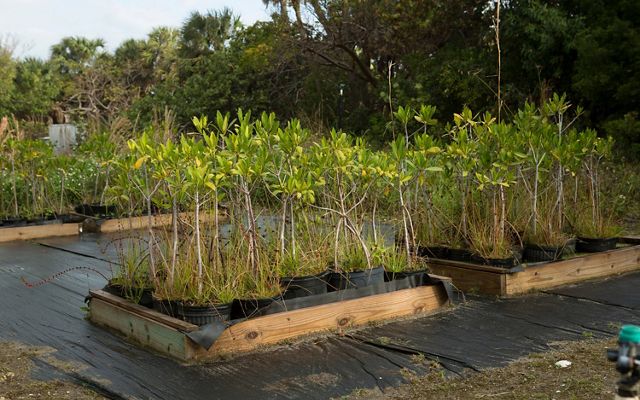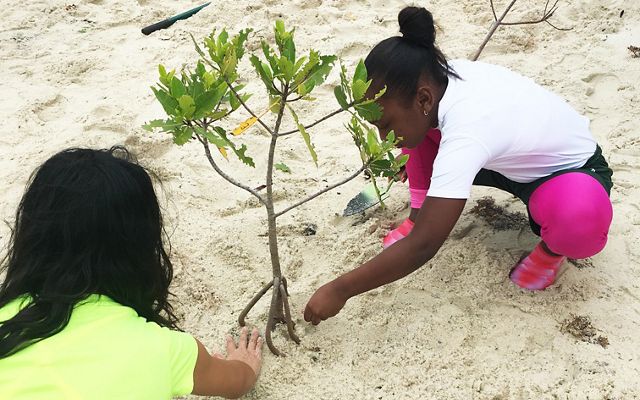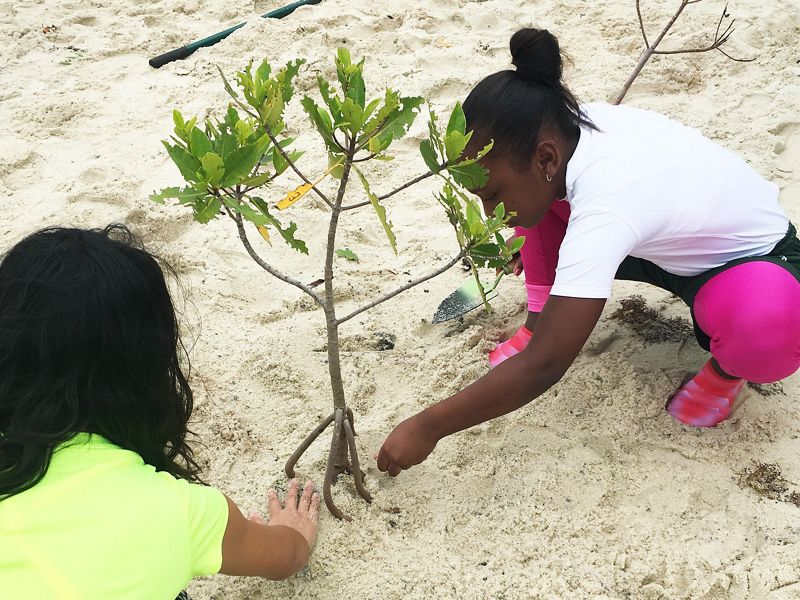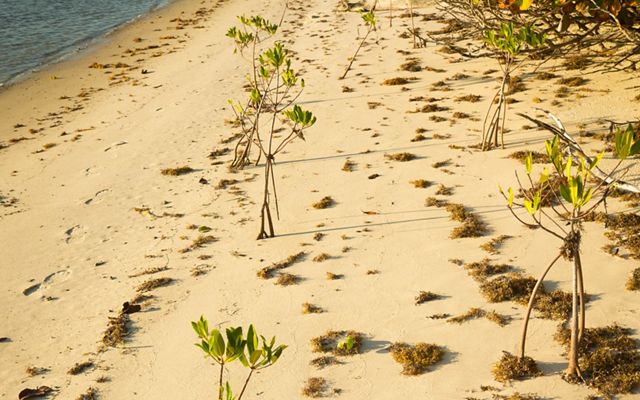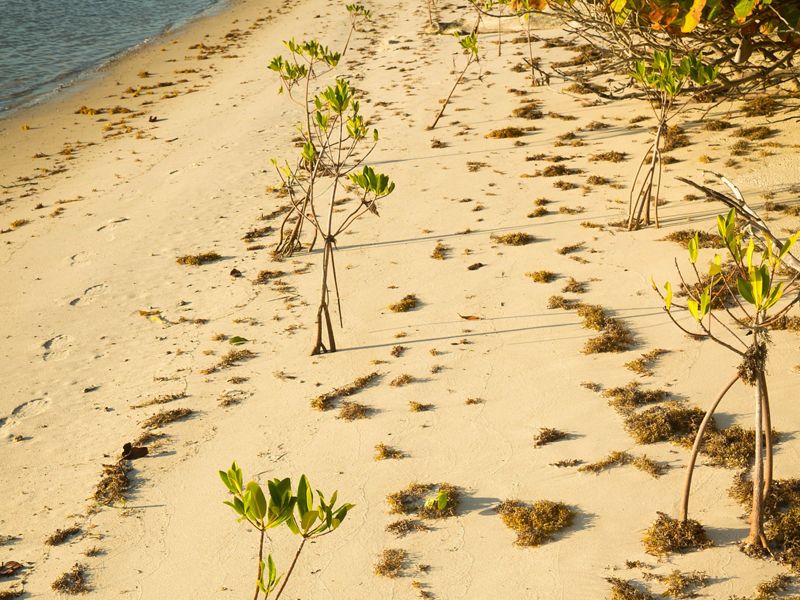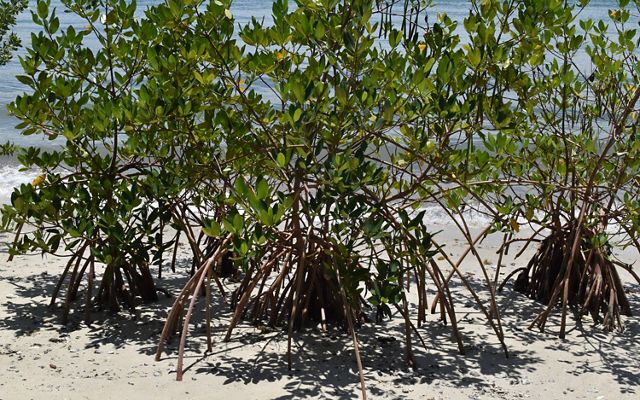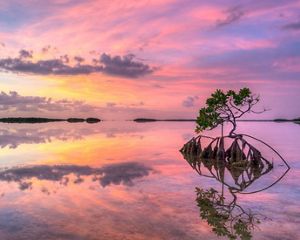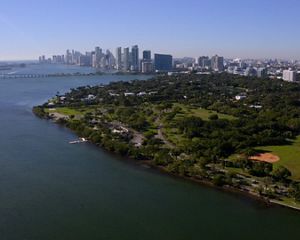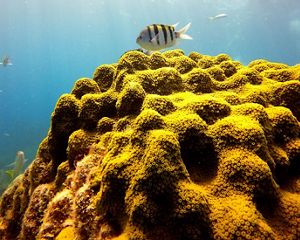The Importance of Mangroves
Florida mangroves provide protection from storms, nurseries for wildlife and recreation for people.
Mangroves are important to people because they help stabilize Florida’s coastline ecosystem and reduce erosion. Mangroves provide natural infrastructure to help protect nearby populated areas by reducing erosion and absorbing storm surge impacts during extreme weather events such as hurricanes.
They are also important to the ecosystem too. Their dense roots help bind and build soils. Their above-ground roots slow down water flows and encourage sediment deposits that reduce coastal erosion.
The complex mangrove root systems filter nitrates, phosphates and other pollutants from the water, improving the water quality flowing from rivers and streams into the estuarine and ocean environment.
Mangrove forests capture massive amounts of carbon dioxide emissions and other greenhouse gases from the atmosphere, and then trap and store them in their carbon-rich flooded soils for millennia. This is an important ecosystem service as we face climate change. This buried carbon is known as “blue carbon” because it is stored underwater in coastal ecosystems like mangrove forests, seagrass beds and salt marshes.
Quote: Anne Birch
Mangroves are magical forests where we discover nature’s secrets. They straddle the connection between land and sea and nature and humans. Mangrove forests nurture our estuaries and fuel our nature-based economies.
Mangrove forests also provides habitat and refuge to a wide array of wildlife such as birds, fish, invertebrates, mammals and plants. Estuarine habitats with coastal mangrove shorelines and tree roots are often important spawning and nursery territory for juvenile marine species including shrimp, crabs, and many sport and commercial fish species such as redfish, snook and tarpons.
Branches of the mangroves act as bird rookeries and nesting areas for coastal wading birds including egrets, herons, cormorants and roseate spoonbills. In some areas, red mangrove roots are ideal for oysters, which can attach to the portion of the roots that hang into the water.
Endangered species such as the smalltooth sawfish, manatee, hawksbill sea turtle, Key Deer and the Florida panther rely on this habitat during some stage of their life cycle.
Mangrove forests provide nature experiences for people such as birding, fishing, snorkeling, kayaking, paddle boarding, and the therapeutic calm and relaxation that comes from enjoying peaceful time in nature. They also provide economic benefits to communities as a nursery for commercial fish stocks.
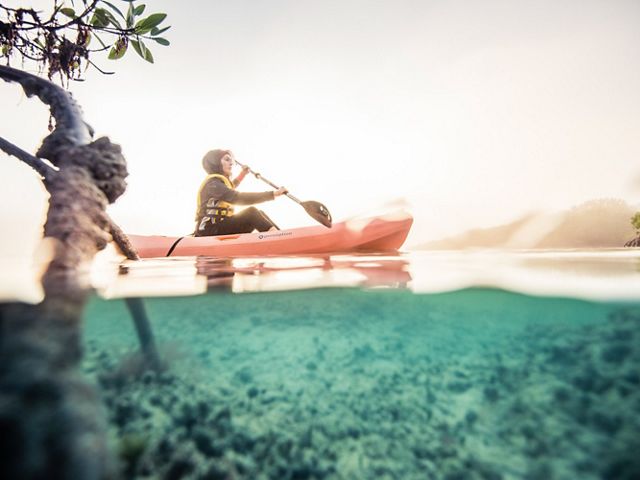
Threats to Mangrove Forests
Unfortunately, there are many challenges that place mangrove forests under threat. Human impact such as dredging, filling, water pollution from herbicides and development can lead to mangrove erosion and habitat destruction. When mangrove forests are cleared and destroyed, they release massive amounts of carbon dioxide into the atmosphere, contributing to climate change.
An important part of our ongoing efforts to restore natural habitat at Blowing Rocks Preserve is the restoration of red mangroves to the shoreline. The importance of mangrove planting at our preserves cannot be understated, to help protect and restore this vital Florida treasure. TNC continues protection and restoration efforts of our important forests, from the Panhandle to the Keys, on behalf of people and nature.
Quote: Report: Building Mangrove Capital
We estimate the present value of Florida mangroves for flood protection as $50 billion.

The Benefits of Mangroves
With coastal challenges created by growing populations, burgeoning development, and climate change, risks to people and property from flooding and storm surge are on the rise. Mangroves provide valuable flood protection and risk reduction benefits to these coastal areas, and yet are a threatened species. Coastal ecosystems, such as reefs and mangroves, are crucial in reducing the damages caused by floods to both people and property by acting as natural barriers to waves and storm surges. This is particularly important across the Caribbean and Florida, where the risk of storms has increased substantially over the past 30 years, accompanied by significant habitat loss. Therefore, the protection provided by mangroves is an essential component of coastal resilience, with their conservation and restoration necessary to safeguard both coastal communities and the natural environment.
TNC has published several reports that demonstrate the benefits of mangroves in Florida, The Bahamas and Mexico, including one detailing the specific flood risk reduction benefits of Florida's mangroves. The findings make a compelling economic case for protecting and restoring mangroves as a risk reduction strategy. Studies like these are important to demonstrate the value of natural climate solutions to encourage investment in nature along our shorelines.
Florida Mangroves: Red, White and Black
Florida is home to three types of native mangrove species: red (Rhizophora mangle), black (Avicennia germinans) and white (Laguncularia racemosa). Each type of mangroves grows in the salty water in abundance along Florida shorelines. All types of mangrove trees (there are more than 50 species throughout the world) can filter out the salt from the sea water as it enters their roots.
Mangrove Shoreline Restoration at Blowing Rocks Preserve

Stay connected for the latest news from nature.
Get global conservation stories, news and local opportunities near you. Check out a sample Nature News email.
